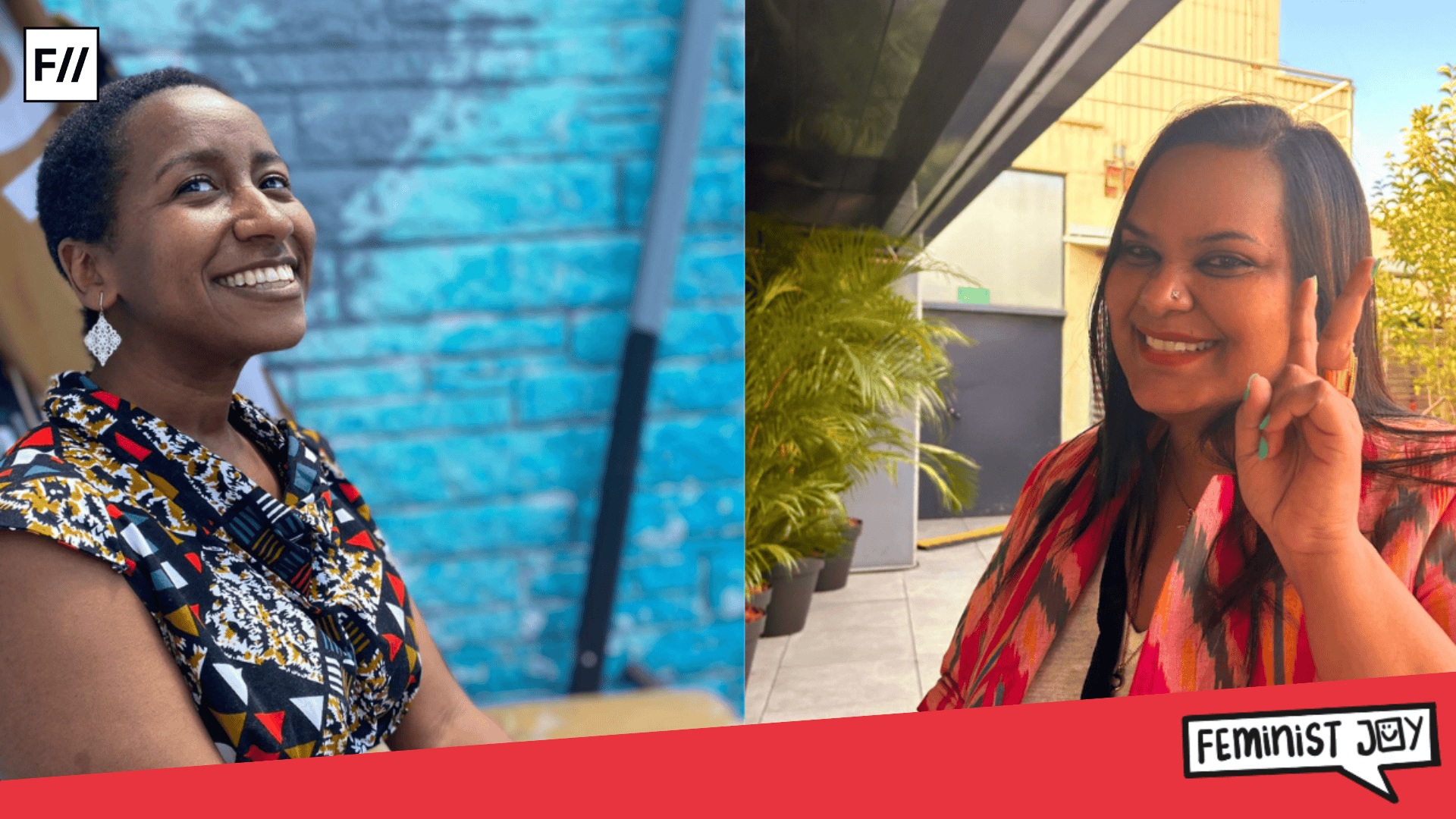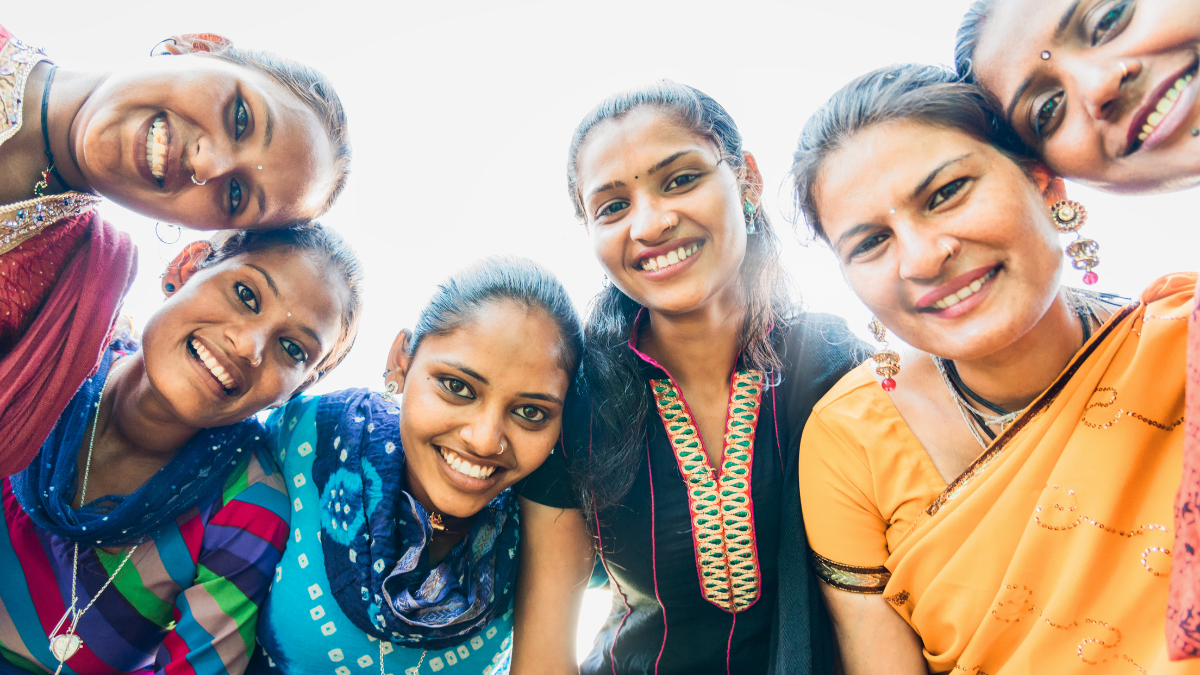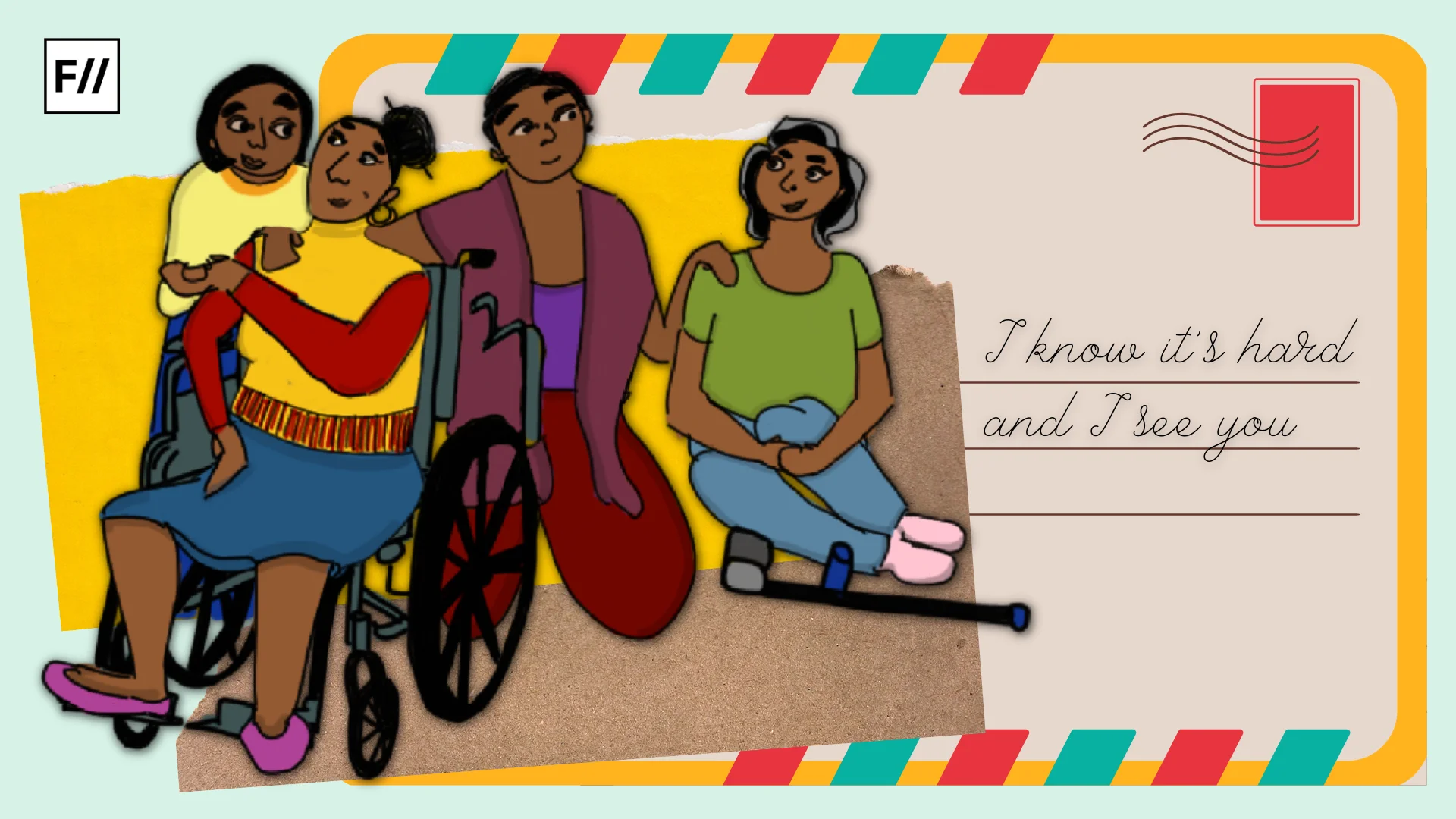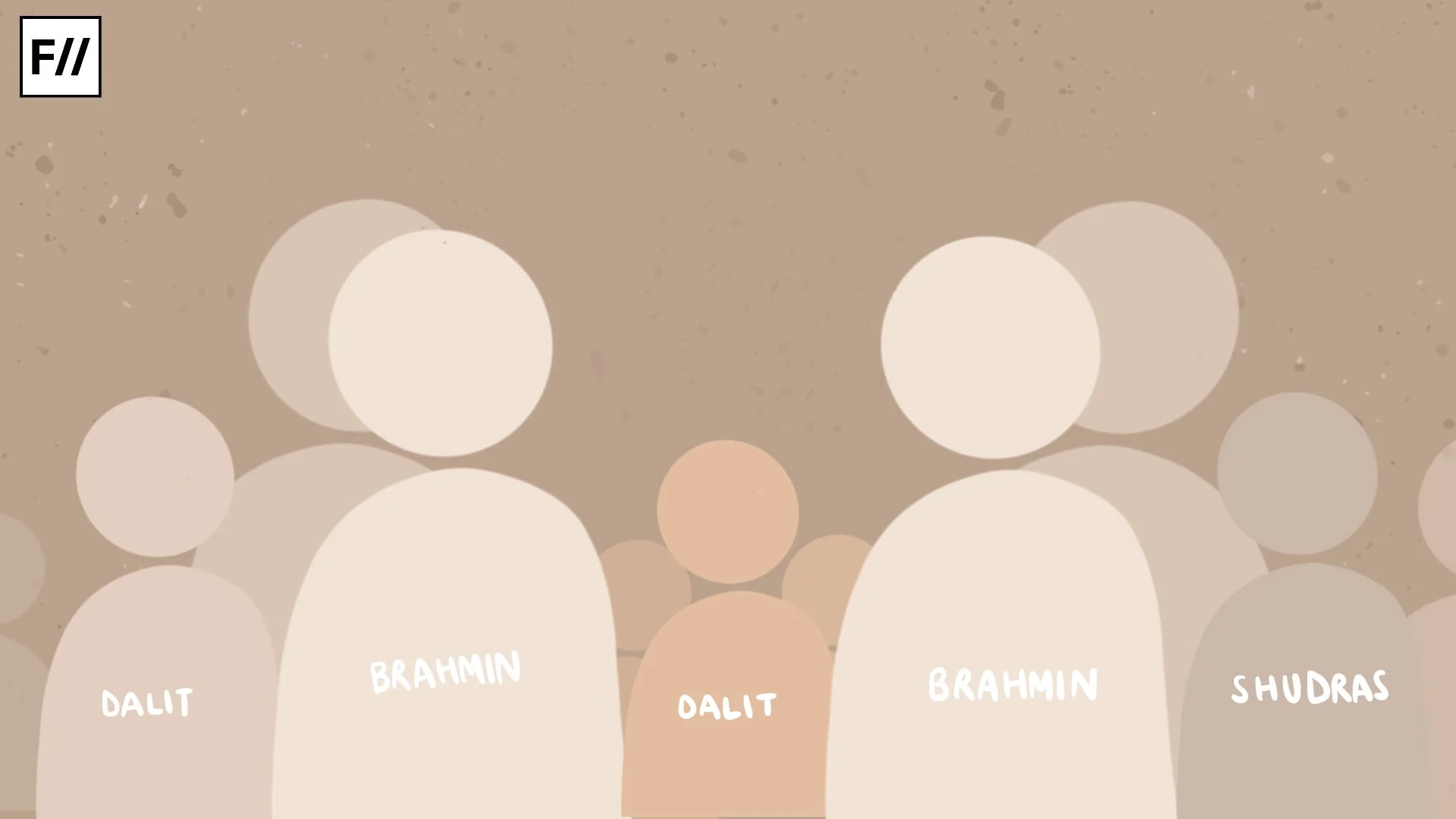A conversation between a Black feminist scholar and a Dalit feminist activist is the seed for this reflective essay. In speaking to each other across racial and caste lines, across continents and struggles, they found themselves circling the same truth.
What began as Jocelyn Bell’s study on Black storytelling in New England and Priyanka Samy’s work with Dalit girls and young women in India’s informal settlements grew into a shared inquiry. What happens when they think about joy together, across their histories of race and caste? What do Black and Dalit feminist traditions teach us when placed in dialogue about the politics of joy?
In this essay, Jocelyn Bell and Priyanka Samy offer their initial reflections on these questions, shaped by their different yet resonant journeys.
Jocelyn Bell on Black Joy for Resistance
When you open yourself up to joy, she rushes in. She’s not patient. She’s not shy. She’s bold. As I have begun to search for joy in the early days of a study on the ethno-racial politics of joy, I see her everywhere. Others may decide on a different set of pronouns for joy; however, when I imagine joy, I always imagine her as a large Black woman. Her belly is large and round, full of laughter so strong that it shakes the roots of mountains; she dances on thick thighs and firm calves, for she must be able to withstand attempts to push her to her knees. The moment I began to search for her as a scholar, she decided the house (that is, the research focus) I had invited her into – Black oral storytelling within New England – was too small. So, she knocked out walls, built new levels, and is just making herself a new home right in the middle of my research agenda. Thus, the expansion of this project from “Black joy” to a project exploring “ethno-racial politics of joy.”
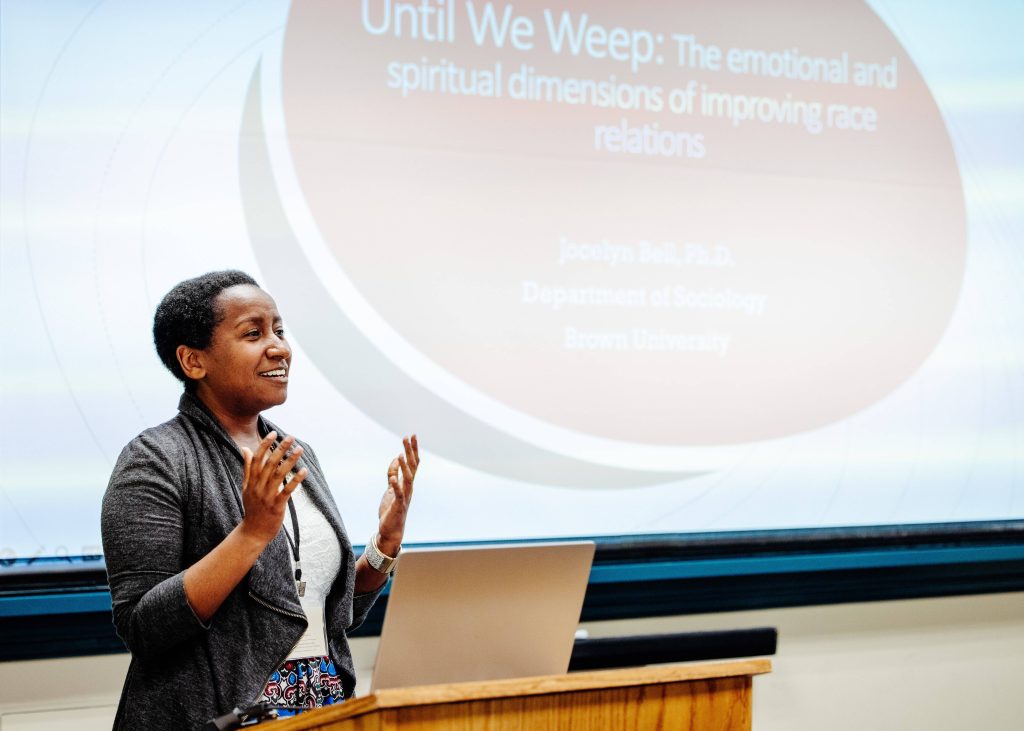
“Joy for resistance” is a powerful strategy that has emerged in movements for ethno-racial rights. In the Black liberation movement in the United States, for example, it is common to hear Black people speak of the importance of “Black joy.” Joy for resistance reveals the false tie between joy and frivolity or luxury and unleashes creative justice efforts. It is an active resistance to burnout and a turn toward a more robust understanding of a love ethic. When I was disappointed by the dearth of the conceptualisation of “joy” in the literature of sociology, I realised that I had begun in the wrong place.
A conversation with Priyanka Samy led me to remember that the theory and praxis of Black feminists is the most obvious place to begin the journey. Their legacy is one I walk in and carry forward. Audre Lorde and bell hooks teach us that joy is intricately linked to self- and communal care. Alice Walker and Stephanie W. H. Camp teach us that the pursuit of justice and resistance to oppression are manifestations of joy, even as they lead to a liberation that nurtures joy.
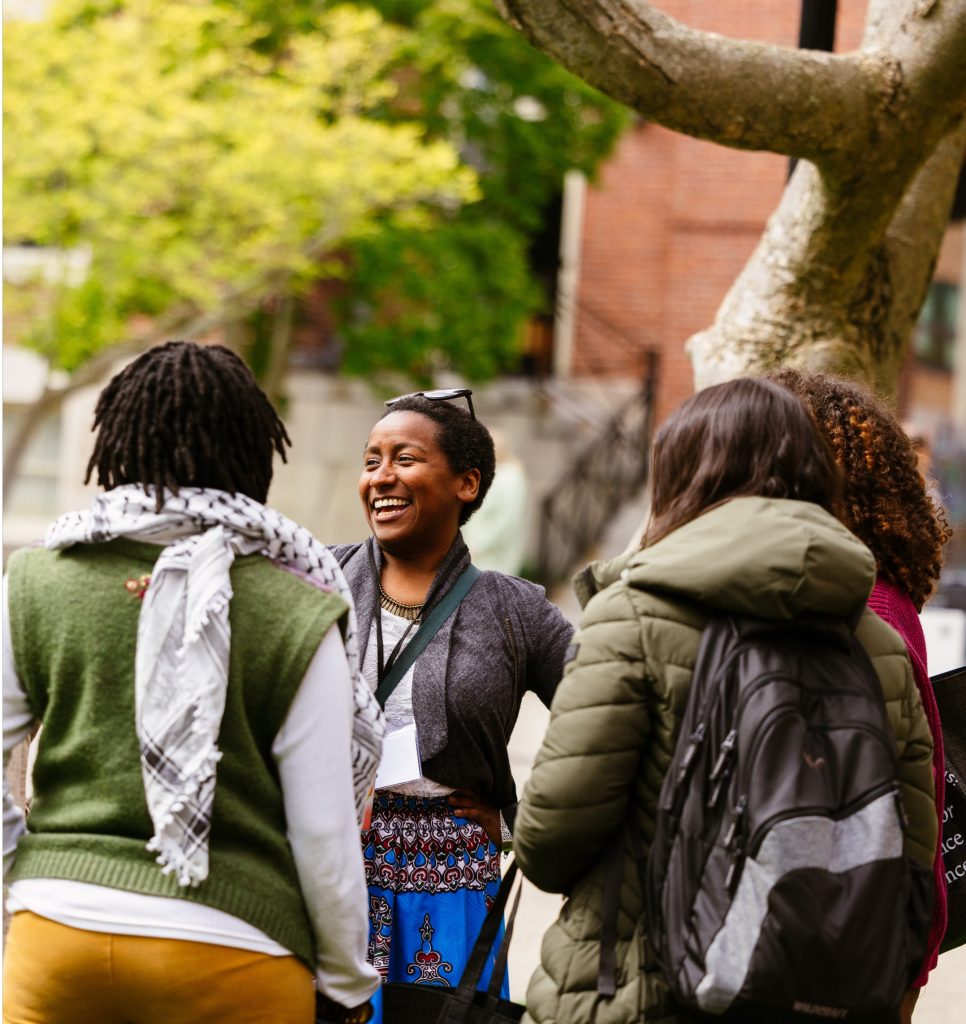
However, Black liberation activists may have misstepped. Joy becomes so intertwined with resistance that we cannot speak of joy without becoming entangled again in making the struggle our central focus. I argue, though, that pursuing “joy for the sake of joy” does not deny the importance of “joy as resistance.” Is it possible that engaging in and conceptualising “joy for the sake of joy” can be a transformative development? I believe so. I just think we may have forgotten to use that transformative art. What actions that are joy not for resistance but just for the sake of joy produce when done in an intentionally justice-oriented community?
Priyanka Samy on working with Dalit girls and women
When I open myself up to joy, she bursts in with the beat of the parai (drum), the shimmer of glass bangles, and the rhythm of feet that refuse to stop dancing. She is bold, brown-skinned, and unapologetically Dalit. Her sari is bright, sometimes the blue of our revolution, sometimes the yellow of turmeric fields. Her laughter spills over like boiling milk, uncontainable, staining the world with its insistence.
The Hindu caste system, a two-thousand-year machinery of hierarchy, was designed to mark Dalits as “impure,” to script us as bodies unworthy of touch, of dignity, of joy. It is a structure whose violence hides in rituals, laws, and everyday exclusions. And yet, joy breaks through it like grass cracking concrete. She is unruly, she seeps through the most minor fissures, and once inside, she expands defiantly.
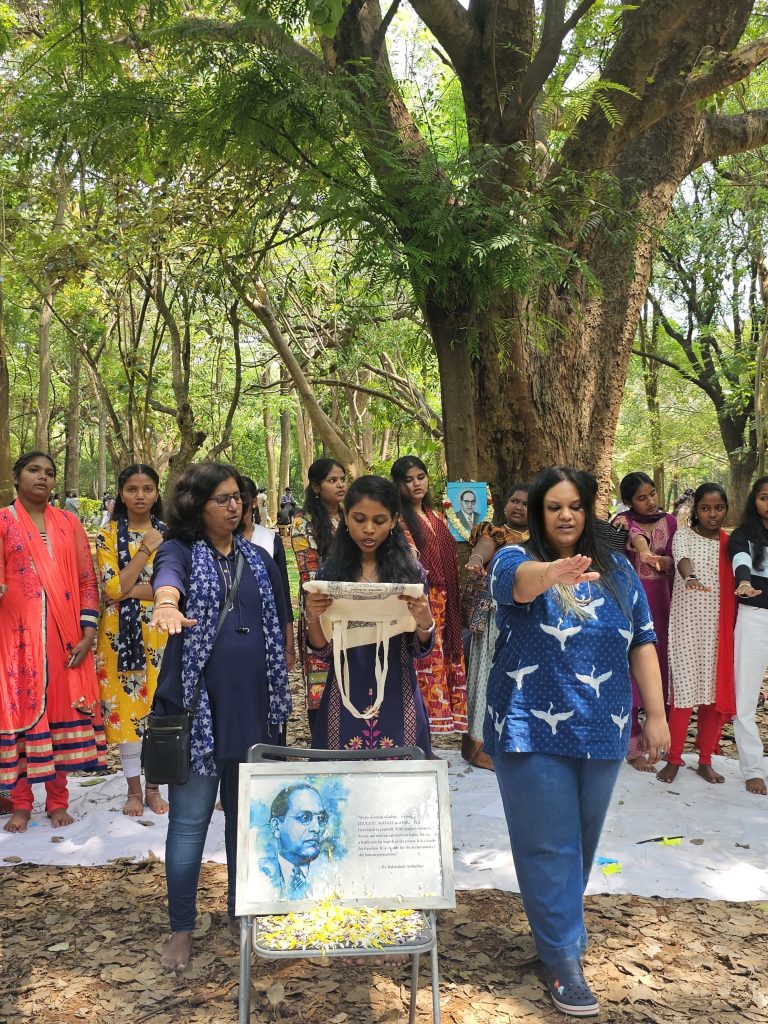
When I began to search for joy in the everyday lives of Dalit women and girls, she immediately outgrew the neat boundaries I had imagined. She refused to live only in the stories of resistance I was documenting.
My work with Dalit girls and young women has shown me that joy can be found even in the most precarious conditions. In the narrow lanes of informal settlements, where open drains run beside fragile walls, I see young women laughing as they braid each other’s hair, imagining futures beyond society’s bounds. Their joy is cultivated and profoundly political. They disrupt dominant ways of knowing that reduce Dalit women to victims, insisting instead that laughter, play, stories, and care for one another are knowledge in themselves.
Dalit feminism has always known joy as a form of resistance. We carry her to the streets, folk songs rising above tear gas, dance erupting even in mourning, refusing to let our story be only of pain. Here, joy is both a weapon and a shield, guarding us against burnout and reminding us that our struggle must also taste of freedom.
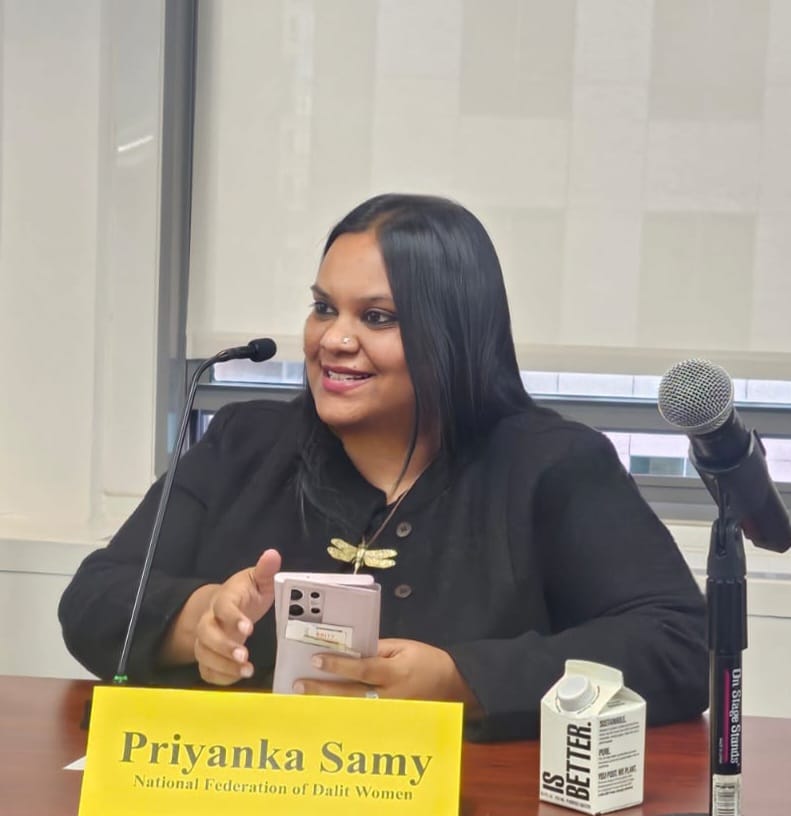
But what if joy need not always be tethered to struggle? What if joy for its own sake: unattached, unburdened, un-instrumentalised, is itself revolutionary?
I think of Dalit women authors like Babytai (Baby) Kamble in “The Prisons We Broke” and Bama in “Karukku”, who show us that joy is woven into survival. That a smile, a story, a festival dance can disrupt centuries of oppression. And I think of the Dalit girls in informal settlements, their palms hennaed, their chatter spilling with gossip, their eyes lit with dreams still too fragile to name. They are already practising a politics of joy and care, one that refuses to collapse into suffering.
Joy in Dalit women’s lives is never solitary. She arrives in clusters. Sitting cross-legged at their sanghas (collectives/unions), humming in lullabies sung in one-room shanties, bursting into laughter when a joke travels across generations. She is the trust that builds movements and the glue of Dalit sisterhood. In a society that has long marked Dalit bodies as “untouchable”, joy insists we are touchable, lovable, worthy.
And so I ask: what happens when we let joy exist not only as resistance, but as her own art, her own presence? She produces community-centred care. She dares to love ourselves outside the shadow of caste and patriarchy.
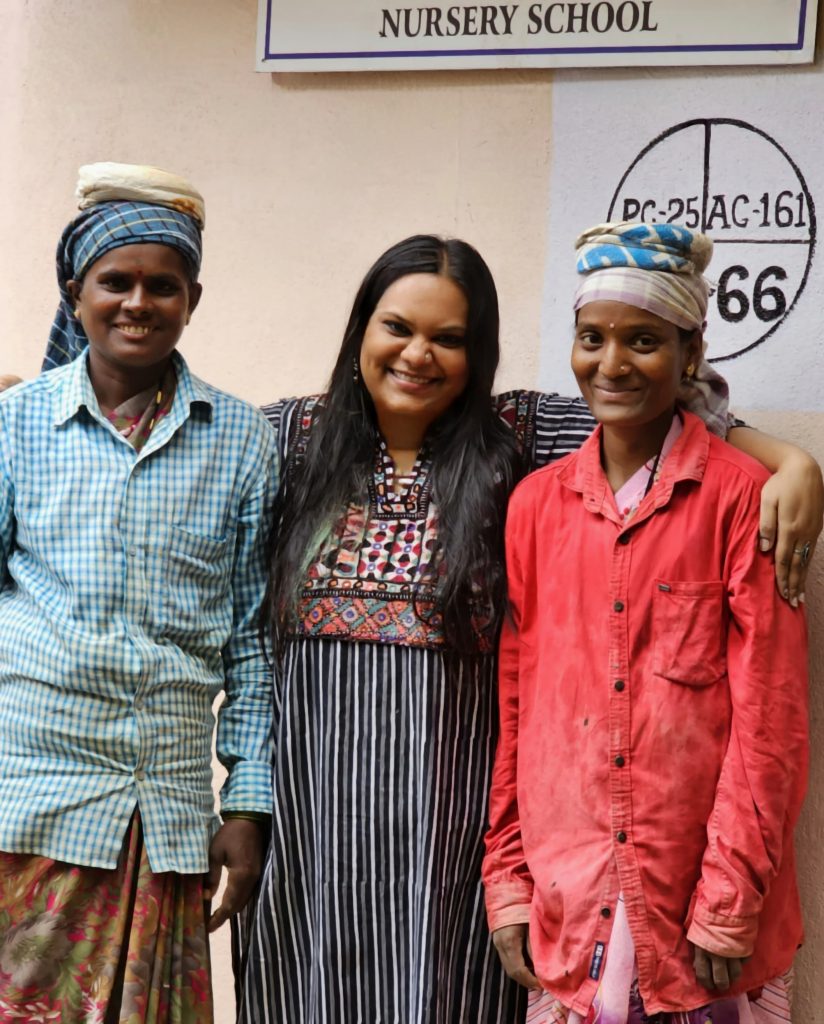
And intertwined with joy is care, the quiet, steadfast practice that makes survival possible. Historically marginalised communities have long built movements on this ethic of collective care, tending to one another’s bodies, spirits, and safety as much as to political demands. For us, care is resistance. It is how girls, women, trans, and non-binary activists withstand exhaustion, rebuild after violence, and imagine futures beyond survival.
We, Black and Dalit feminists, walk parallel paths here, inspired by each other’s scholarship and activism. Our movements echo across oceans, refusing to be confined to registers of grief. Together, joy and care constitute the very infrastructure of our struggles, sustaining both our resistance and our imagination.
And always, it is joy that resists erasure, pulling us back to laughter, to food and community, to the pulse of life itself, reminding us that liberation is not only to be won, but to be lived, here and now.
For us, joy is never trivial; she is central to our liberation. She is radical and thunderous. Unyielding and relentless. She is the seedbed of intersectional feminist futures, long in the making, slowly unfolding into being.
